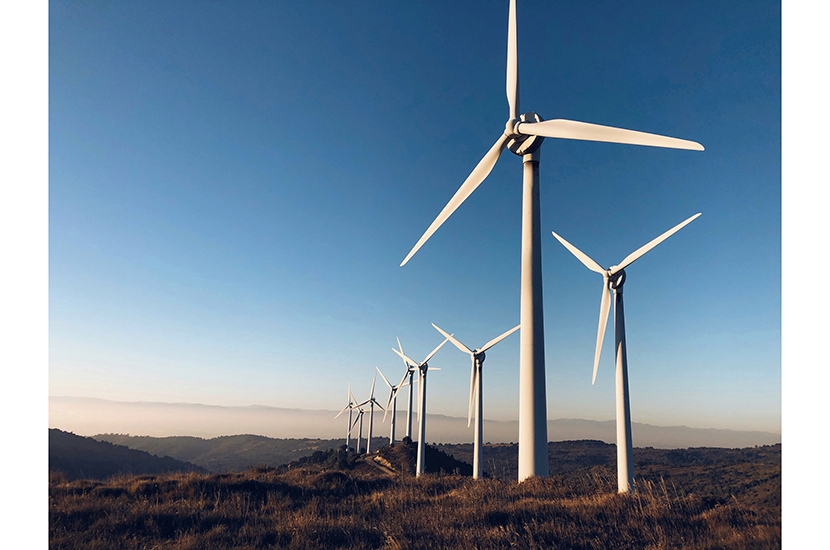Late in 2013, David Cameron snapped. ‘Get rid of all the green crap,’ the then prime minister told energy ministers. His demand came after a backbench revolt over the surcharges tacked on to household energy bills to support onshore wind power. Not for the last time, his decision was based on a spectacular failure to see one of the big trends of the age: the stunning fall in the costs of renewable energy that was already under way.
In the past decade, the cost of generating electricity from onshore wind has fallen by 40 per cent. For offshore turbines, it’s down almost a third. Globally, it’s now generally cheaper to construct and run new renewable generation than it is to build a new station to burn fossil fuels. The cost of solar generation has fallen even faster than wind: the price of a solar photovoltaic module has almost halved since 2010.
The collapse in the cost of renewable energy generation is one of the great untold stories in recent years. It’s also one of several good reasons to doubt those who confidently forecast that net zero will be an expensive disaster.
Many of the same people once insisted wind power had no economic future and Britain should bet on coal. Last year, renewables provided more than 40 per cent of UK electricity, more than fossil fuels; the UK will stop burning coal for electricity in 2024.
What happened? In short, markets. Markets create incentives: sell something more cheaply and you’ll sell more, and make more money. Growing demand for renewable energy created incentives for industry to innovate and cut the costs. All the forecasts of the costs of moving to green heating and electric cars will be wrong. As demand is established, companies will do what companies always do and find ways to meet that demand more cheaply.
The government must point the way, which is what a lot of net zero policies are about. From 2030, you can’t sell a new petrol or diesel car in the UK. The auto industry responded with a shrug. Most manufacturers were already on track to go all-electric.
The best-selling car in the UK in June was Elon Musk’s all-electric Tesla Model 3. Musk is one of the world’s richest men because stock markets are betting that electric vehicles will once again prove Hal Varian’s Law. Varian, chief economist at Google, says the easiest way to forecast the future is to look at what rich people have today. Middle-income people will have something equivalent in ten years; the poor a decade later.
If futurology doesn’t persuade you, try some economic history. Smartphones; personal computers; the automobile — when they were first sold, all faced predictions that their cost and novelty would mean they would always only be for the rich.
The heat pump that could one day replace your boiler, estimated today to cost £10,000, is likely to go the same way. Oxford’s Jan Rosenow reckons that, once tariffs are switched from electricity to gas and pump prices fall by just 25 per cent, they’ll be cheaper overall than boilers. The industry expects prices to fall much further than that.
None of this is to deny the costs involved in decarbonising. It will be disruptive. There will be winners and losers. The key to retaining public consent will be policies that support those least able to bear the up-front costs of transition: low-income households and rural residents. Workers in the sectors facing greatest disruption should also be given assistance.
Rishi Sunak’s Treasury is cautious on net zero. That might play well with some backbenchers, but it’s a missed opportunity. While he keeps quiet, colleagues such as Kwasi Kwarteng are making the conservative case for private-sector innovation being key to long-term decarbonisation.
Timescales matter. Net zero’s nominal price tag is £1.4 trillion, calculated by the Office for Budget Responsibility. But it’s cumulative over three decades. And it will be heavily offset by innovation and cost reductions. Overall, the OBR reckons net zero will cost taxpayers less over 30 years than Covid did in 18 months. Sunak’s Treasury concedes that ‘the combined effect of UK and global climate action on UK economic growth is likely to be relatively small’ and ‘could be slightly positive or slightly negative’.
Even in the worst cases, the costs of net zero will be slight compared with the price of doing nothing. OBR forecasters reckon the UK national debt could reach 289 per cent — almost triple its current postwar record level — if climate change is not curbed, resulting in rising seas, deadly heatwaves and more regular flooding. Which price would you rather pay?







Comments